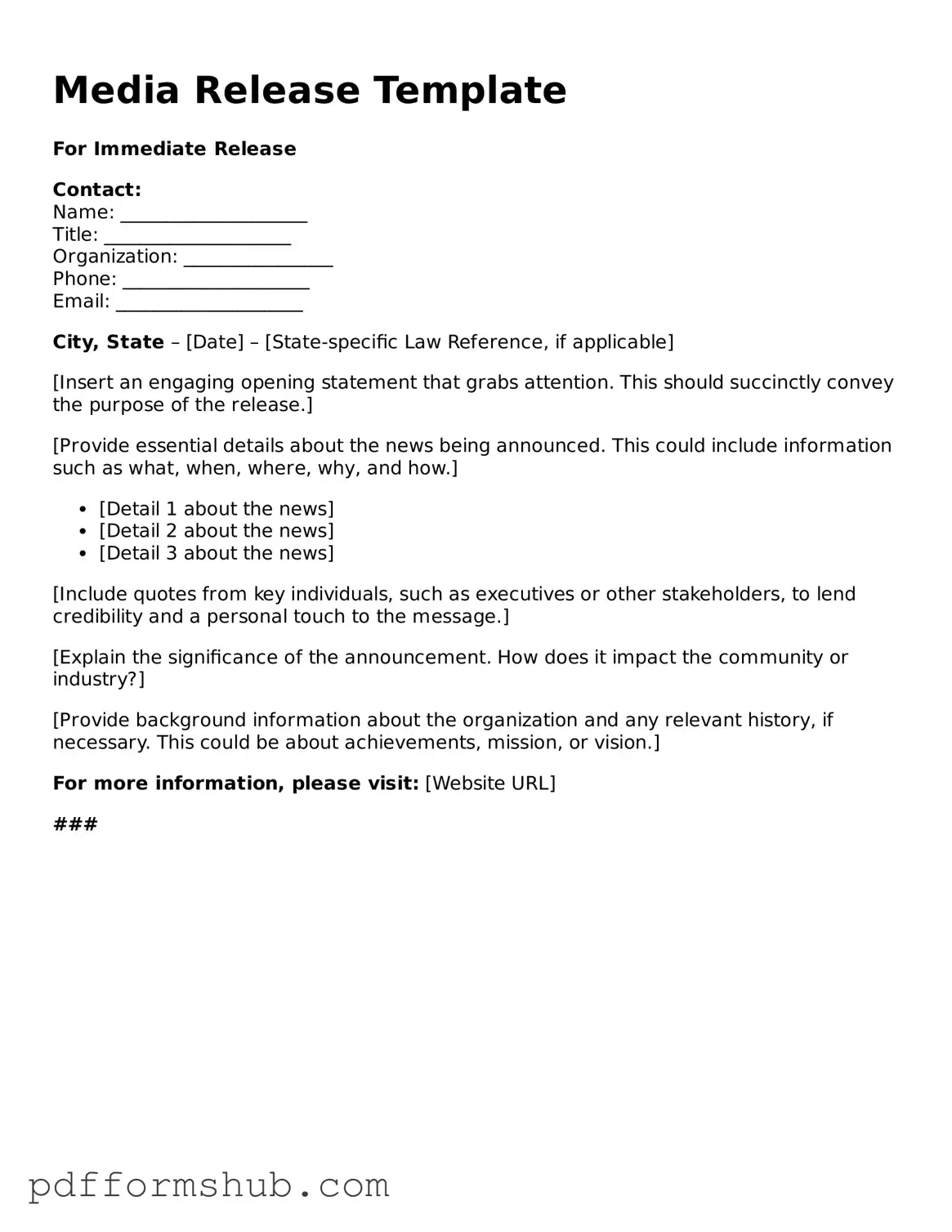In today's digital landscape, the Media Release form serves as a crucial tool for individuals and organizations looking to share their stories and images with the world. This form facilitates the legal permission needed to use a person's likeness, voice, or other identifiable features in various media formats, including photographs, videos, and promotional materials. By signing a Media Release, individuals grant rights to the entity requesting the release, ensuring that their image or voice can be used without future legal complications. It often outlines the scope of use, duration, and any compensation involved, providing clarity for both parties. Understanding the importance of this form is essential, as it protects the rights of individuals while allowing creators to showcase their work effectively. Whether you are a photographer, a filmmaker, or a business owner, grasping the nuances of the Media Release form can enhance your projects and foster positive relationships with those you feature.
